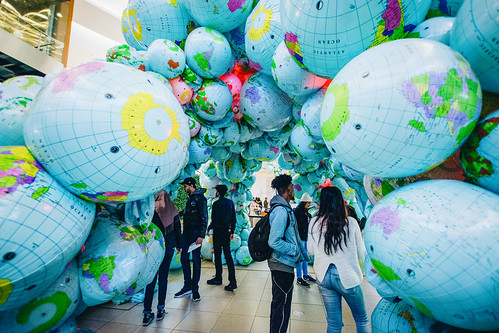Miradas fragmentarias
la écfrasis en dos cuentos de Laia Jufresa
DOI:
https://doi.org/10.7146/dl.v31i.134293Keywords:
Laia Jufresa, El esquinista, Mexico, ecphrasis, short-story, family, visual artsAbstract
This article analyses two stories from the book El esquinista (2014) by Mexican author Laia Jufresa, based on their ecphrastic textual frameworks: “Cristina” and “La noche que desapareció Holanda”. The first story focuses on the work Christina’s World by the American painter Andrew Wyeth. The second contains several references to the works by Johannes Vermeer: Woman Holding a Balance and Young Woman with a Lute. In both texts Jufresa creates an inter-artistic space where literature and painting meet and interfere. In these experimental stories the narrator changes the perspective, both the perspective with which she observes a painting and the inner perspective, which observes the most intimate reflections of the characters. Jufresa’s approach to universal themes puts the reader in an uncomfortable space, but at the same time she encourages him or her to participate in the game of the visible and the invisible.
References
Artigas Albarelli, Irene. 2013. Galería de palabras: La variedad de la écfrasis. Madrid: Iberoamericana-Vervuert.
Eaker, Adam. 2018. “Johannes Vermeer. Young Woman with a Lute.” MET Museum, consultado el 7 de diciembre de 2022, <https://www.metmuseum.org/art/collection/search/437880>.
Herrera, Daniel. 2016. “Destinos y azoteas. Una reseña sobre El esquinista, de Laia Jufresa.” Astillero, consultado el 7 de diciembre de 2022, <https://astilleroediciones.wordpress.com/2016/09/12/destinos-y-azoteas/>.
Jufresa, Laia. 2014. El esquinista. México: Fondo Editorial Tierra Adentro.
Jufresa, Laia. 2017. Umami. Barcelona: Literatura Random House.
Jufresa, Laia. s.f. Laia Jufresa, consultado el 7 de diciembre de 2022, <http://www.laiajufresa.com/>.
Meyer-Minnermann, Klaus. 2016. “Octavio Paz y el Surrealismo.” Literatura Mexicana 27 (2): 73-95.
MoMA. “Andrew Wyeth. Christina’s World. 1948.” MoMA, consultado el 7 de diciembre de 2022, <https://www.moma.org/collection/works/78455>.
Morábito, Fabio. 2015. “El esquinista, de Laia Jufresa.” Tierra Adentro, consultado el 7 de diciembre de 2022, <https://www.tierraadentro.cultura.gob.mx/el-esquinista-de-laia-jufresa/>.
Mora Valcárcel, Carmen de. 1995. En breve: estudios sobre el cuento hispanoamericano contemporáneo. Sevilla: Universidad de Sevilla.
Pimentel, Luz Aurora. 2003. “Écfrasis y lecturas iconotextuales.” Poligrafías: Revista de literatura comparada 4: 205-215.
Prado, Agustín (ed.). 2017. El cuento hispanoamericano del siglo XXI. Universidad de Alicante: América Sin Nombre 22.
Quintero Tobón, Carlos Andrés. 2019. “La pintura y la explosión de los ideales en El Siglo de las Luces de Alejo Carpentier.” Estudios de Teoría Literaria - Revista digital: artes, letras y humanidades 8 (17): 230-243.
Sager Eidt, Laura M. 2008. Writing and filming the painting: ekphrasis in literature and film. Nueva York: Rodopi, 2008.
Van Hecke, An. 2020. “La búsqueda del quinto sabor: espacio y comida en Umami de Laia Jufresa’. R. Lefere, F. Díaz Ruiz, L. Morales Benito (Eds.), Perspectivas sobre el futuro de la narrativa hispánica: ensayos y testimonios, (267-287). (Cuadernos de América sin Nombre, 45). Universidad de Alicante.
Wheelock, Arthur K. Jr. s.f. “Johannes Vermeer/Woman Holding a Balance/c. 1664.” Dutch Paintings of the Seventeenth Century - National Gallery of Art, consultado el 7 de diciembre de 2022, <https://purl.org/nga/collection/artobject/1236>.
Downloads
Published
Versions
- 2022-12-20 (2)
- 2022-12-19 (1)
How to Cite
Issue
Section
License
Counting from volume 31 (2022), articles published in Diálogos Latinoamericanos are licensed under CC-BY 4.0. Read more about the license terms here https://creativecommons.org/licenses/by/4.0/.
No Creative Commons license applied on volumes 1-30. All rights reserved by the authors. Readers may download, read, and link to the articles, but they cannot republish the articles.
With the publication of volume 31 (2022), authors retain the full copyright to their articles and give Diálogos Latinoamericanos the right to the first publication. Authors also retain copyright to earlier versions of manuscripts, such as the submitted (pre-print) and the accepted manuscript (post-print).
Copyright to articles published in volumes 1-30 is held by the authors.





